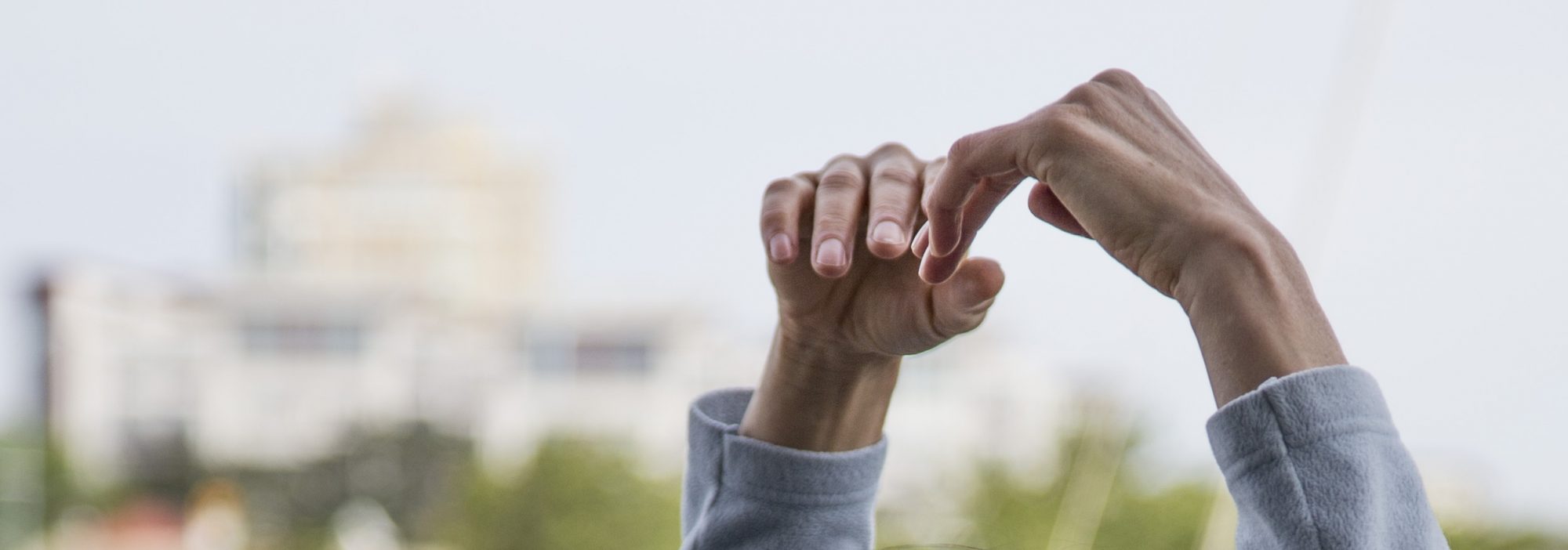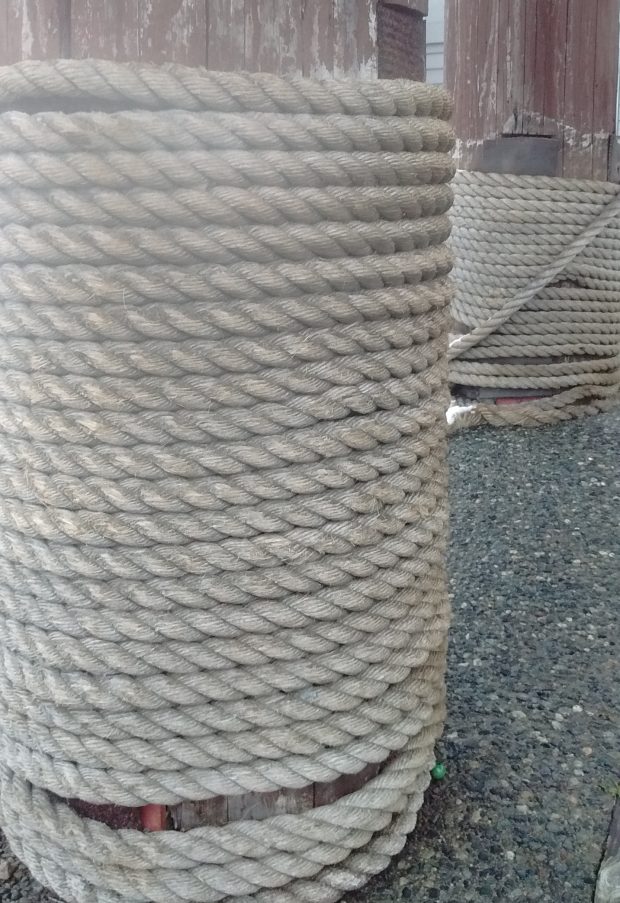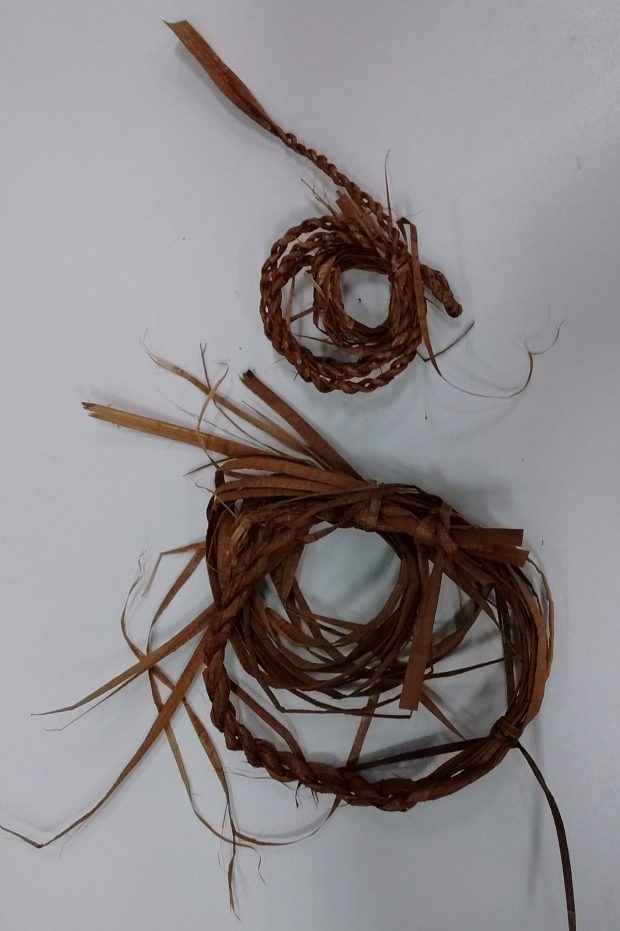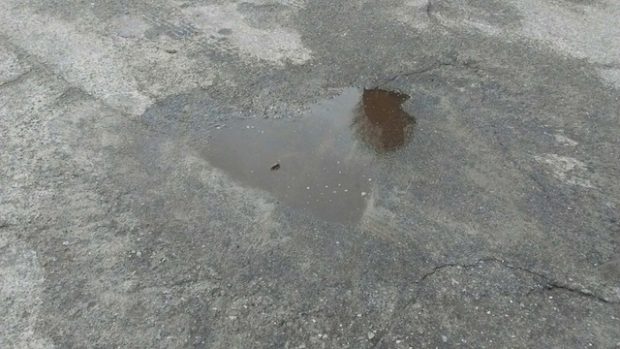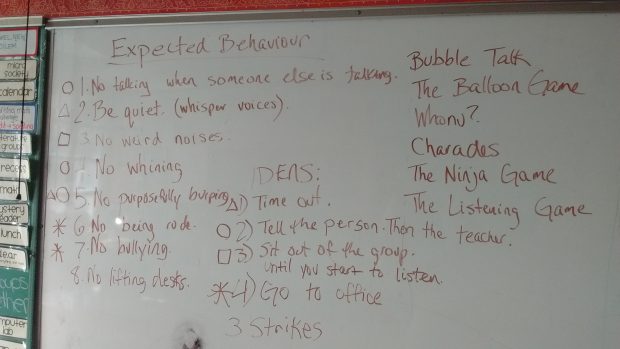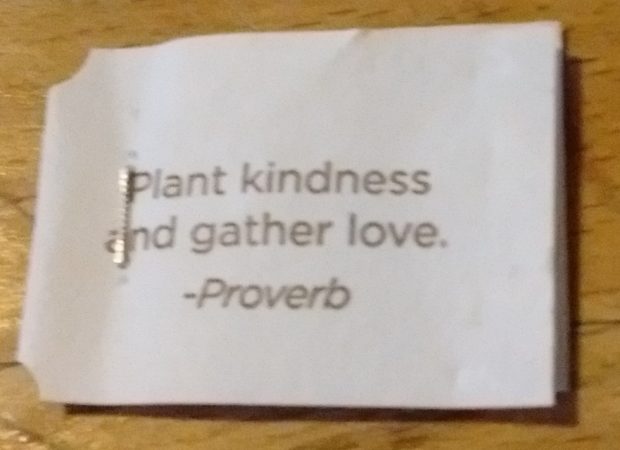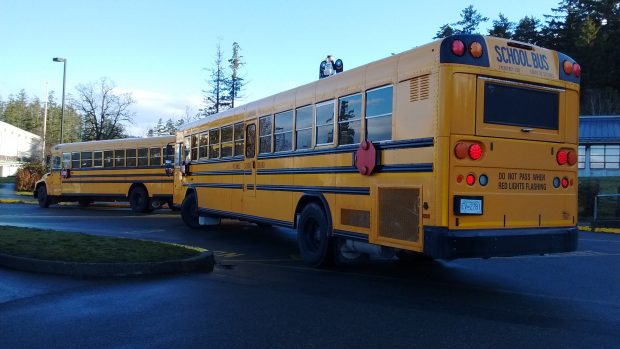TETHERED
I was struck by the grounding presence of real ropes below the large bird as one approaches the front doors. This rope is a direct representation of the ropes used to tie canoes at the top of the mountain, LÁU,WELNEW . I had the good fortune to listen to Robin take a Montessori class on a tour of the school. The intricate connections between symbol, representation, history and collective strength are powerful webs lifting up the community. LÁU,WELNEW is SENĆOŦEN for “a place of refuge” and in the W̱SÁNEĆ flood story the people loaded their community into a very large canoe and received refuge at LÁU,WELNEW. Robin described the ropes as tethering the children who attend the school to a place of refuge to keep them safe.
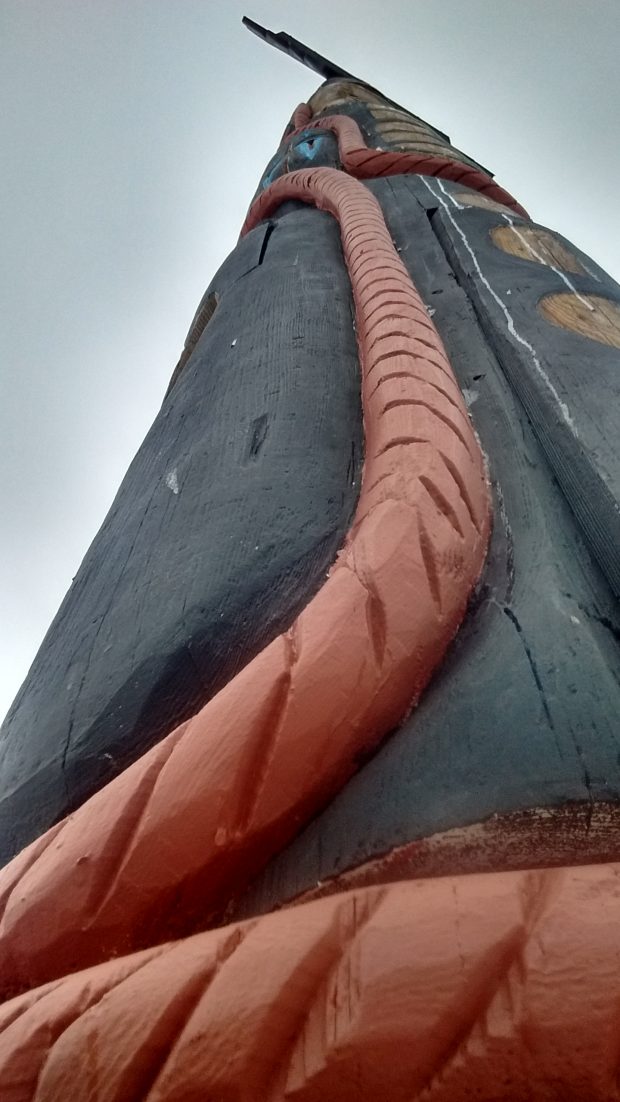
AWE
In front of the large bird I encountered a totem pole with rope carved at the bottom of the pole, winding its way up around the figures. I was in awe of the height of the pole and how the feeling of the ropes as tethers to refuge and protection translated so strongly to my experience as I stood and gazed skyward. My mind wandered with the word tether. I drew a relationship between my tethering to the realities of colonialism and the community’s tethering to resilience and perseverance to care for and teach their children.
REVERBERATING CONNECTIONS
I sat with Robin in the multi-purpose room one day and described my intense response to the word ‘tethered’ from her descriptions of the carvings in front of the school. She spoke of the ropes in finer detail, relating to stories from her culture. She took me to the display case in the centre of the room, and brought out cedar ropes made by the children, demonstrating how strong they are when you pull on them. A similar basis for design was used to create tools her ancestors could rely on. It was significant to Robin that the children created them. In light of the tragedy the school is facing, these ropes are a new kind of tether – they personify the ability of the children to create strength through tools of their own making along with deepening connections reverberating through the school. The children are invited to receive these tools and understand how they can use them.
PUDDLE
On a Friday afternoon a smudging was held at UVic for members of my practicum class. I went for a walk afterward, reflecting on the powerful healing transformation I had experienced. I began to wonder about the children and staff at LÁU,WELNEW and their healing journeys – were their hearts being taken care of? Did they have the immense support I had just received as a privileged white settler to be able to access their culture and healing practices in such a simple, fluid, and direct way? I reflected on the brushing off in the school gymnasium and how I could not comprehend it viscerally.
And then I questioned if it mattered how the healing process is accessed – is this a white privilege construct that says it has to come easily? I looked upon the road I was crossing and there in front of me lay this puddle – it spoke to me of strong, loving and caring hearts that are able to continue on with their work through murky and uncertain circumstances. For the first time, I was experiencing a deeper understanding of the intersections between the myriad of challenges the children and adults in the community might be facing.
BEHAVIOUR BOARD
One aspect of my practice was to facilitate social skills training with one of the grade 4/5 classes, based on the Social Thinking® program written by Michelle Garcia Winner and Linda K. Murphy. Our initial class began with a discussion on expected behaviours and what the children would like it to look like in our classroom. I was surprised by their responses, as they seemed to be listing rules that had been given to them before. I encouraged them to make up their own rules and they were clear this list was accurate. We also discussed ideas of what to do when the behaviours occur. The list on the right of the board reflects games they had enjoyed playing with the previous social skills trainer, whom I had been observing to learn about the program. I was taken by how clearly the majority of students articulated appropriate social behaviour. They knew what others expected of them, and they knew how it affected one another in the classroom when people were struggling to monitor their behaviour. I realized one of my best contributions to the project would be to design activities that encouraged the students to practice social skills while continuing to define them all at the same time.
TEA REFLECTION
My work with the grade 4/5 class in the BrainDance© and social skills training was very challenging. One evening, as I was preparing tea, I reflected on the work the classroom teacher did with the children. She maintains one of the most remarkable examples of Carl Roger’s (Jones –Smith, 2016) unconditional positive regard I have ever seen practiced! Her acceptance of the children’s ideas and behaviour focused on interpreting them as strengths they can build and draw upon. I often found myself questioning whether this approach contributed to a lack of structure in the classroom environment that the students might otherwise experience as consistency and a sense of safety. As this tension moved back in forth in my learning, my attempts to adopt aspects of this style in my interactions with the students felt inadequate and nearly impossible for me to achieve. I was struggling to connect meaningfully with the students.
This evening I was feeling particularly downhearted, and just as I was reminding myself to consider everything the children may or may not be dealing with in their lives, I read the proverb on the teabag label and was profoundly struck by its clear description of the teacher’s actions – her care and consideration for every child in that class plants kindness! When I see the students coming to her with their questions and vulnerabilities, seeking guidance from a place of trust, she is clearly invited to gather love.
WEARY ROADS
We had many snow days that shut down the school and prevented children from attending. This surprised me. The roads were challenging to travel on, however many of the other school divisions did not cancel instruction. One snowy afternoon I overheard the Immersion kindergarten teacher asking if the roads had been checked. When I inquired, she explained that the majority of the roads on the reserve are not paved. When snow covers them the bus cannot access most of the driveways leading to children’s homes. Her description took me back to memories of my childhood years in the late 60’s. All of the roads in my hometown have been paved for more than thirty years. It is not the extremity of the weather creating snow days at LÁU,WELNEW – it is a lack of infrastructure.
DENDRITE TREES
I had been working with every class in the school for a month, visiting each one between one and four days a week to lead the children in the BrainDance©. I had been explaining to faculty and staff that the BrainDance supports children feeling more grounded, able to focus, calm and relaxed. In the first couple of weeks, teachers reported the children enjoying the work and finding it fun. Some teachers began to show an interest in learning the movement sequence to use after I departed. Some teachers were grateful I continued to come in, often remarking that the children could really use it that day. Other teachers were skeptical of its promised effects. I promised it would become very clear when I had the opportunity to present a workshop for professional development day. A snow day postponed the proposed workshop from February to March. I found myself doubting my ability to stand firm in my belief of what the BrainDance© can do. Late one day, as I walked my dog through a park, I looked up at the silhouette of trees and was struck by their complexity and beauty. They look like what I imagine dendrites, which grow out of the cell bodies in the human brain, to look like. I was relieved and reassured. The image reminded me that the beauty and mystery of the human brain is gradually becoming better known, and my visceral experience of dance, which has been known for hundreds upon thousands of years is now being corroborated by science. Margie Gillis is one of Canada’s most treasured contemporary dancers, and she eloquently explains,
interest in learning the movement sequence to use after I departed. Some teachers were grateful I continued to come in, often remarking that the children could really use it that day. Other teachers were skeptical of its promised effects. I promised it would become very clear when I had the opportunity to present a workshop for professional development day. A snow day postponed the proposed workshop from February to March. I found myself doubting my ability to stand firm in my belief of what the BrainDance© can do. Late one day, as I walked my dog through a park, I looked up at the silhouette of trees and was struck by their complexity and beauty. They look like what I imagine dendrites, which grow out of the cell bodies in the human brain, to look like. I was relieved and reassured. The image reminded me that the beauty and mystery of the human brain is gradually becoming better known, and my visceral experience of dance, which has been known for hundreds upon thousands of years is now being corroborated by science. Margie Gillis is one of Canada’s most treasured contemporary dancers, and she eloquently explains,
We are all dancing from the inside, out. So the process is this; what you feel, your intellect, your emotion, your spirituality, the whole cinema of who you are turns into motion, turns into electricity in the brain, runs down the nervous system, touches the muscles which engage and create motion. Some of us mute this process to control or use movement primarily as function. In the art of dance, movement is full engagement, question and quest . . . Dance embraces every aspect of who we are in vivid connectedness with life, bringing us to the full expansive wisdom and knowledge of our intrinsic belonging to the wild, as well as the cultivated. (Gillis, 2016)
References
Gillis, M. (2016). Dancing from the inside out. The Walrus Talks: What is art, anyways?
Retrieved from https://www.youtube.com/watch?v=B9cVfIqpgg0
Green Gilbert, Anne (2006). Brain Compatible Dance Education. Reston, Virginia: National Dance Association.
Jones-Smith, E. (2016). Theories of counseling and psychotherapy: An integrative approach. Thousand Oaks, CA: Sage Publications.
